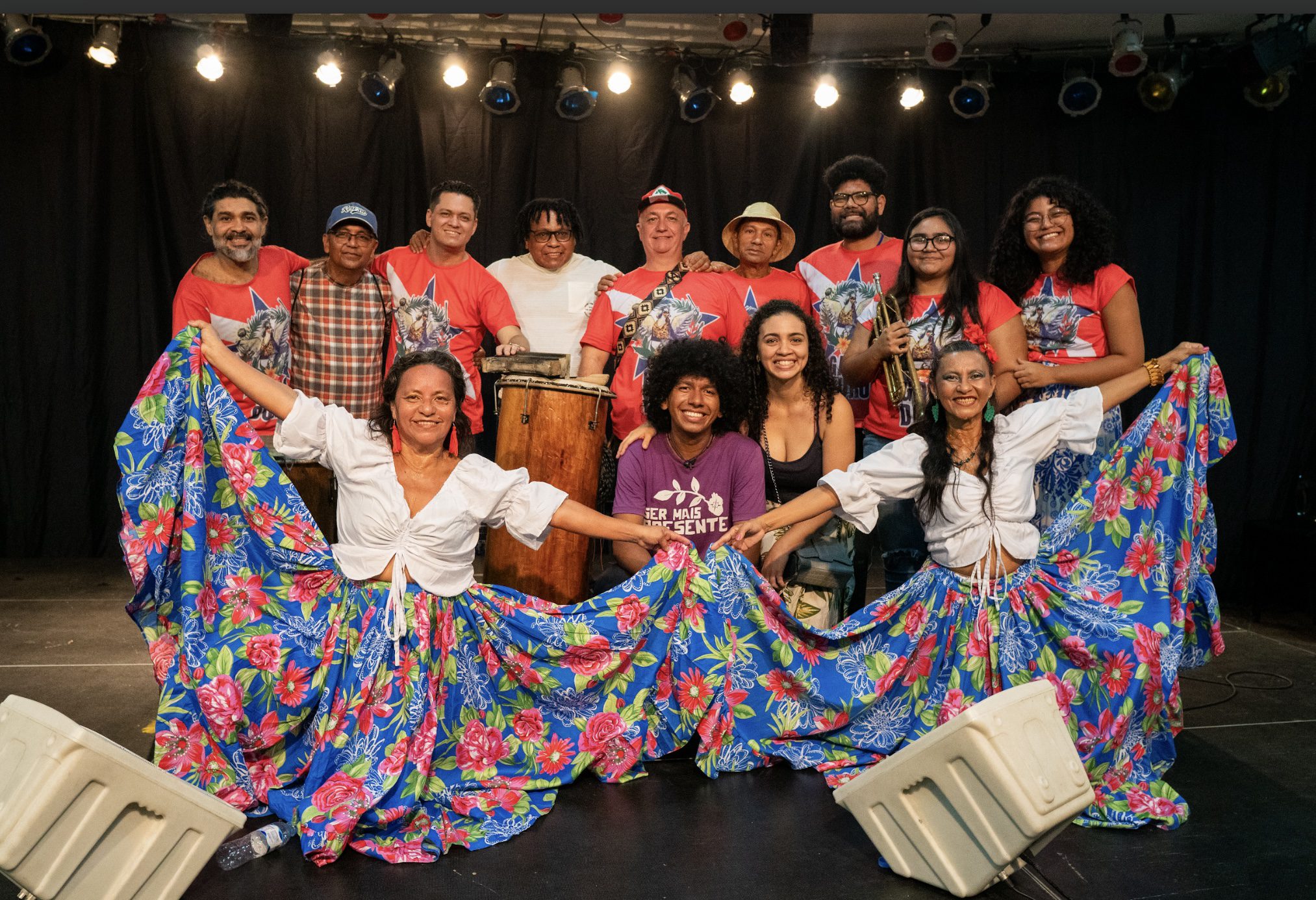
Credit: Disclosure
“Amazon lives! This land endures trying to endure you!” The verse by the rapper from Pará, Bruna BG, echoed even stronger on the night of April 26, at Sesc Ver-o-Peso, in Belém (PA), when the mini-documentary Tones of the Amazon was presented, conceived by Instituto Arapyaú and directed by Mariane Claro and Igor Pimentel. The work shows how, with its captivating beats and deep roots, carimbó, maracatu, lambada, rap, and other rhythms are a living example of the power of culture to unite people, preserve traditions, and inspire new ways of living in harmony with nature.
Shown for the first time in the Amazon region, the film brings together the perceptions of important artists from Pará, such as Mestre Deia, musical director of the group Pássaro Ararajuba, and Ricardo Aquino, coordinator of Carimbó Galo Duro. It is he who says that “carimbó is the standing forest,” defining well a music that sings about animals, rivers, and the biodiversity of the forest.
In a night that celebrated the richness of its art and traditions, the musicians participated in a debate about the importance of valuing and preserving these cultural treasures as a way to keep the Amazon alive. “Our music is resistance and defense of the forest,” says Mestre Deia.
This is a message that Arapyaú has been echoing more and more. Sabrina Fernandes, Communication Manager of the institute, mediated the conversation after the screening and reinforced the need to look at territories from the perspective of people, keeping them at the center of discussions on climate and sustainability.
“There is no way to understand territories without looking at their culture. Cultural expressions have the power to enable connections, evoke emotions, and understandings,” says Sabrina.
In this process of sensitization and connection between culture and people, audiovisual has been an important narrative tool. “We need to touch hearts and minds, involving new audiences, shedding light on what connects us and not on what separates us. And the use of music as a guiding thread in an audiovisual work seems to be, to some extent, a possible way to overcome these barriers,” she adds.